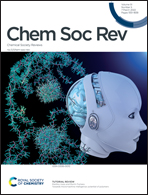Metal-catalyzed asymmetric heteroarylation of alkenes: diverse activation mechanisms
Abstract
This review summarizes the state-of-the-art in transition metal-catalyzed asymmetric alkylation of heteroarenes using alkenes (covering literature from 2000 to late 2021). Based on elementary reactions on metals for substrate activation, these reactions are broadly classified in several categories: (A) concerted oxidative addition of heteroaryl C–H bonds on rhodium(I) and iridium(I), (B) ligand-to-ligand hydrogen transfer (LLHT) on low-valent 3d metal complexes of nickel and cobalt, (C) different ways for deprotonation of heteroaryl C–H bonds by late transition metal complexes, especially palladium, including electrophilic aromatic substitution and a related mechanism, base-assisted intramolecular electrophilic substitution, concerted and nonconcerted metalation deprotonation, (D) σ-bond metathesis by d0 early transition metal complexes, (E) electrophilic activation of olefins by Pd(II), Pt(II) and Au(I), and (F) metal hydride insertion of aryl olefins and dienes. The demand to achieve enantiocontrol in the heteroarylation reactions has also driven innovation in chiral ancillary ligands, exemplified by extremely bulky, chiral N-heterocyclic carbenes for nickel catalysts, bulky monodentate oxazolines for Wacker-type reactions and chiral cyclopentadienyl ligands for half-sandwich complexes of scandium.



 Please wait while we load your content...
Please wait while we load your content...